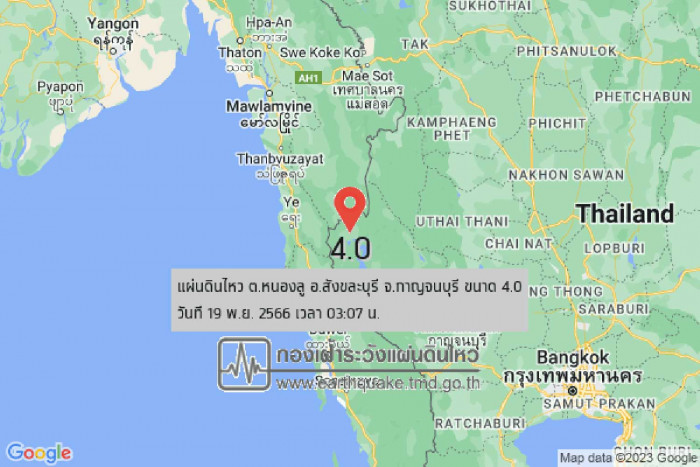
PUBLISHED : 21 Nov 2023 at 05:00
Hundreds of quakes occur along the Three Pagodas Fault per year in Kanchanaburi, although they are too small to be noticed, according to a geological expert.
Prinya Putthapiban, an expert at the Geoscience Department of Mahidol University, said the Three Pagodas Fault runs parallel to the Sagaing Fault in Myanmar and the Ranong Fault in Thailand’s south, leaving little room for it to move and create powerful earthquakes.
“It is unlikely that the quakes along the Three Pagodas Fault will be as destructive as those detected in southern China, northern Myanmar and Nepal,” said Mr Prinya.
He was speaking after a recent earthquake in Kanchanaburi, which had its epicentre near tambon Nong Lu of Sangkhla Buri district, at a depth of about six kilometres.
Three Pagoda Fault lies roughly 60 kilometres across Thong Pha Phum and Sangkhla Buri districts, which are close to the country’s largest dam — the Srinagarind dam in Kanchanaburi province.
Mr Prinya confirmed that the 4-magnitude quake on Sunday morning posed no harm to the Vajiralongkorn and Srinagarind dams.
He said most earthquakes that occur along the Three Pagodas Fault are so mild they go unnoticed.
Mr Prinya explained that earthquakes with a magnitude of around 8-9 in the Southeast Asia region are likely to occur on the ridge between the Indo-Australian Plate and the Eurasian Plate, roughly 500 kilometres away from Thailand.
The closest fault line which could potentially unleash a destructive impact on Thailand is Myanmar’s Sagaing Fault. However, he said that most quakes caused by this fault occur on its western side, and so Thailand, which lies on the east, is mostly unaffected.

